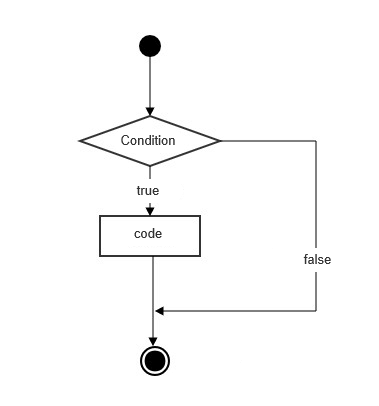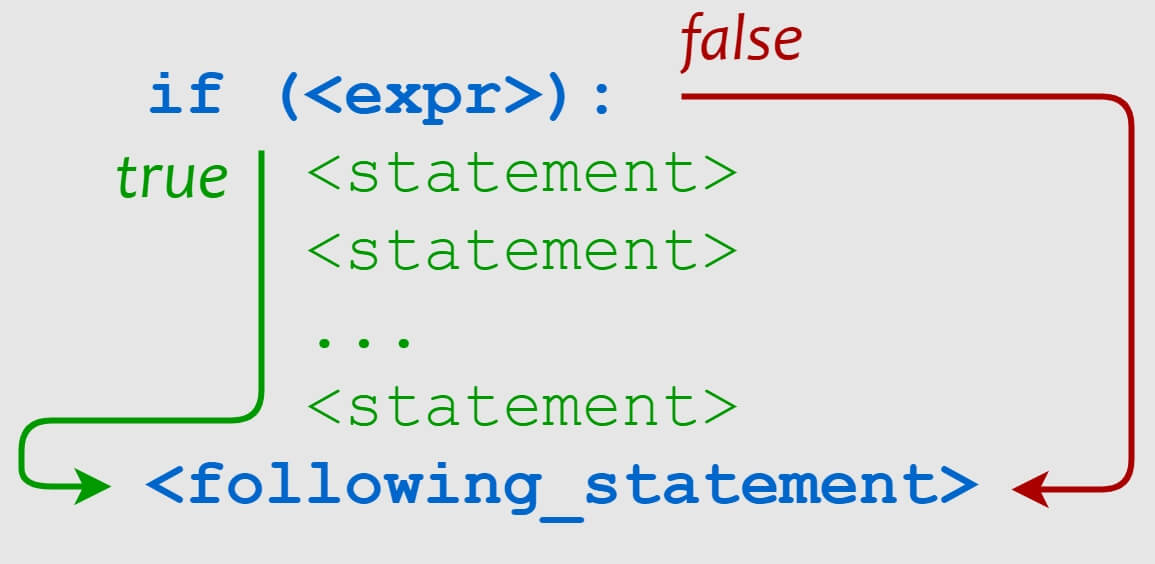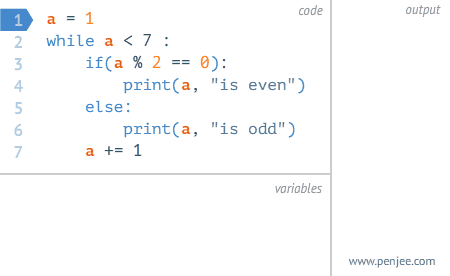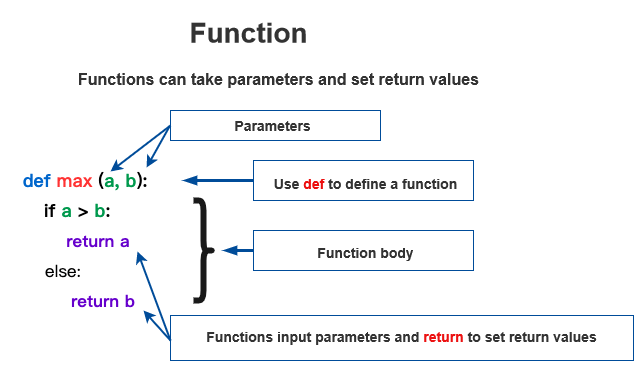Python Conditional Statements
Python's conditional statements are used to decide the flow of code execution based on the result of one or more statements (True or False).
The following diagram gives a basic overview of how conditional statements work:

Code Execution Process

In Python, the general structure of an if statement is as follows:
if condition_1: statement_block_1 elif condition_2: statement_block_2 else: statement_block_3
If
condition_1isTrue,statement_block_1will be executed.If
condition_1isFalse,condition_2will be evaluated.If
condition_2isTrue,statement_block_2will be executed.If
condition_2isFalse,statement_block_3will be executed.
Python uses elif instead of else if. Thus, the keywords for an if statement are if – elif – else.
Note:
Every condition must be followed by a colon
:to indicate that the subsequent block of statements should be executed if the condition is true.Indentation is used to define the statement block. Statements with the same indentation belong to the same block.
Python does not have a
switch...casestatement. However, in Python 3.10+, thematch...casestatement was introduced, which serves a similar function.

Example
The following is a simple if statement example:
#!/usr/bin/python3
var1 = 100
if var1:
print("1 - if statement is True")
print(var1)
var2 = 0
if var2:
print("2 - if statement is True")
print(var2)
print("Goodbye!")Output:
1 - if statement is True 100 Goodbye!
As we can see, since var2 is 0, the if block for var2 was not executed.
Dog Age Calculation Example
This example calculates a dog's age in human years:
#!/usr/bin/python3
age = int(input("Please enter your dog's age: "))
print("")
if age <= 0:
print("Are you kidding me?")
elif age == 1:
print("Equivalent to a 14-year-old human.")
elif age == 2:
print("Equivalent to a 22-year-old human.")
elif age > 2:
human = 22 + (age - 2) * 5
print("Equivalent human age: ", human)
# Exit prompt
input("Press enter to exit")Save this script as dog.py and run it:
$ python3 dog.py Please enter your dog's age: 1 Equivalent to a 14-year-old human. Press enter to exit
Common Operators in if Statements
| Operator | Description |
|---|---|
< | Less than |
<= | Less than or equal to |
> | Greater than |
>= | Greater than or equal to |
== | Equal to (compares if two values are equal) |
!= | Not equal to |
Example
#!/usr/bin/python3 # Demonstrating the == operator # Using numbers print(5 == 6) # Using variables x = 5 y = 8 print(x == y)
Output:
False False
Number Guessing Game Example
This script demonstrates a number guessing game:
#!/usr/bin/python3
# Number guessing game
number = 7
guess = -1
print("Number Guessing Game!")
while guess != number:
guess = int(input("Please guess the number: "))
if guess == number:
print("Congratulations, you guessed it right!")
elif guess < number:
print("Your guess is too low...")
elif guess > number:
print("Your guess is too high...")Execution and Output:
$ python3 high_low.py Number Guessing Game! Please guess the number: 1 Your guess is too low... Please guess the number: 9 Your guess is too high... Please guess the number: 7 Congratulations, you guessed it right!
Nested if Statements
In Python, nested if statements allow you to place an if...elif...else structure inside another if...elif...else structure.
The general structure for nested if statements is as follows:
if expression1: statement if expression2: statement elif expression3: statement else: statement elif expression4: statement else: statement
Example
# !/usr/bin/python3
num = int(input("Enter a number: "))
if num % 2 == 0:
if num % 3 == 0:
print("The number you entered is divisible by both 2 and 3.")
else:
print("The number you entered is divisible by 2 but not by 3.")
else:
if num % 3 == 0:
print("The number you entered is divisible by 3 but not by 2.")
else:
print("The number you entered is not divisible by either 2 or 3.")Save the above code to a file named test_if.py. After running the script, the output will be:
$ python3 test.py Enter a number: 6 The number you entered is divisible by both 2 and 3.
match...case Statement
Introduced in Python 3.10, the match...case statement provides a more readable and efficient alternative to a series of if-else conditions.
The object after match is sequentially compared with the patterns following case. If a match is found, the corresponding code block is executed. The wildcard _ can match anything.
The general syntax for the match...case structure is as follows:
match subject: case <pattern_1>: <action_1> case <pattern_2>: <action_2> case <pattern_3>: <action_3> case _: <action_wildcard>
The case _: is similar to the default: case in C and Java. When no other case matches, it will always match this one.
Example
def http_error(status): match status: case 400: return "Bad request" case 404: return "Not found" case 418: return "I'm a teapot" case _: return "Something's wrong with the internet" mystatus = 400 print(http_error(mystatus))
In this example, the script checks HTTP status codes and outputs a corresponding message.
Output:
Bad request
Multiple Match Conditions
A single case can match multiple conditions by using the | operator. For example:
... case 401 | 403 | 404: return "Not allowed"
This case matches any of the conditions 401, 403, or 404 and executes the corresponding block.


